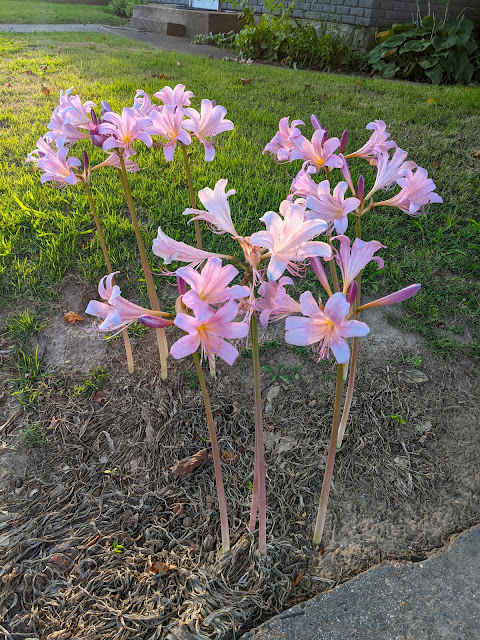A reviewer takes note of my novel's botanicals
The Language of Bodies isn't a flowery story: it's full of oddity, passion, and pain; wax figures, mystical moments, and odd characters. It doesn't use flowery language. Yet the cover image includes trumpet vine flowers, and a recent reviewer wrote the following:
"DeWitt Hall deftly weaves a tale equal parts tenderness and torture, rapture and revenge. A master of metaphor, she skillfully uses the natural world—from Monarch pupa to resurrection lilies—to beautifully reflect her characters' arcs and transformations."
My protagonist Maddie suffers self-imposed exile in central Missouri to be near the home of her wife's murderer, in hope of exacting revenge. While there, she attempts to grow some plants around the wax museum where she works. The native wildlife which survives and thrives despite the heat acts as a contrast and distraction from the lifelessness inside the building.Carolyn Roy-Bornstein, author of Crash and Through Thick and Thin.
At the height of summer, unearthly pale, leafless stalks peer out from the dry ground, and push up quickly, blossoming nearly overnight into lilies like the ones in the picture above. The leaves themselves grow lush in the spring, but die off, leaving behind a bed of what looks like dried seaweed.
Before the stalks flower, they look surreal, thinly phallic and miraculous in the speed of their growth out of apparent lifelessness.
Maddie notices these seemingly magical organisms, and asks the young man who works at the convenience store near the museum about them. Chip's encyclopedic knowledge of wax worms, the local flora, and the murderer's ex wife all contribute to Maddie's entertainment, and to her planning.
The Language of Bodies isn't about flowers. It's about different kinds of love and loss, and the dark places guilt and grief can take us. I hope you'll read it, and that you'll notice the flowers glowing through the darkness.

Comments
Post a Comment